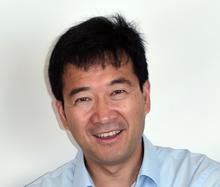
Affiliate Faculty (Professor – ENG/ECE)
Research Interests:
Molecular Spectroscopic Imaging Research
We develop and apply molecular spectroscopic imaging technologies to enable discovery-driven research towards marker-based precise diagnosis and/or treatment of human diseases. With integrated expertise in engineering, physics, chemistry, biology, medicine and entrepreneurship, our research team is devoted to: development of imaging tools, discovery of new biology, and delivery to clinic.
Selected Publications:
“Lipid desaturation is a metabolic marker and therapeutic target of ovarian cancer stem cells”, Junjie Li, Salvatore Condello, Jessica Thomes-Pepin, Xiaoxiao Ma, Yu Xia, Thomas D Hurley, Daniela Matei*, Ji-Xin Cheng*, Cell Stem Cell, 2017, 20: 303-314.
“Volumetric chemical imaging by stimulated Raman projection microscopy and tomography”, Xueli Chen, Chi Zhang, Peng Lin, Kai-Chih Huang, Jimin Liang, Jie Tian, Ji-Xin Cheng, Nature Communications, 2017, 8: 15117.
“Depth-resolved mid-infrared photothermal imaging of living cells and organism with sub-micron spatial resolution”, Delong Zhang, Chen Li, Chi Zhang, Mikhail N. Slipchenko, Gregory Eakins, Ji-Xin Cheng, Science Advances, 2016, 2: e1600521.
“Vibrational spectroscopic imaging of living systems: Emerging platform for biology and medicine”, Ji-Xin Cheng*, Sunney Xie*, Science, Review, 2015, 350: aaa8870.
“Label-free bond-selective imaging by listening to vibrationally excited molecules”, Han-Wei Wang Ning Chai, Pu Wang, Song Hu, Wei Dou, David Umulis, Lihong V. Wang, Michael Sturek, Robert Lucht, Ji-Xin Cheng*, Phys Rev Lett, 2011, 106: 238106.
For a full list of publications, please see the attached CV
Research Descriptions:
Label-free Spectroscopic Imaging
Professor Cheng and his research team has been constantly at the most forefront of the rising field of molecular spectroscopic imaging in technology, science, and clinical translation. Current projects include:
(1) Multiplex stimulated Raman microscopy: spectral acquisition at microsecond scale
(2) Mid-infrared photothermal microscopy: Breaking the diffraction limit by sensing the thermal effect
(3) Vibration-based photoacoustic tomography: listening to chemical bond vibration
(4) Transient absorption microscopy: spectroscopic imaging in the time domain
(5) Volumetric chemical microscopy: label-free, slide-free chemical histology